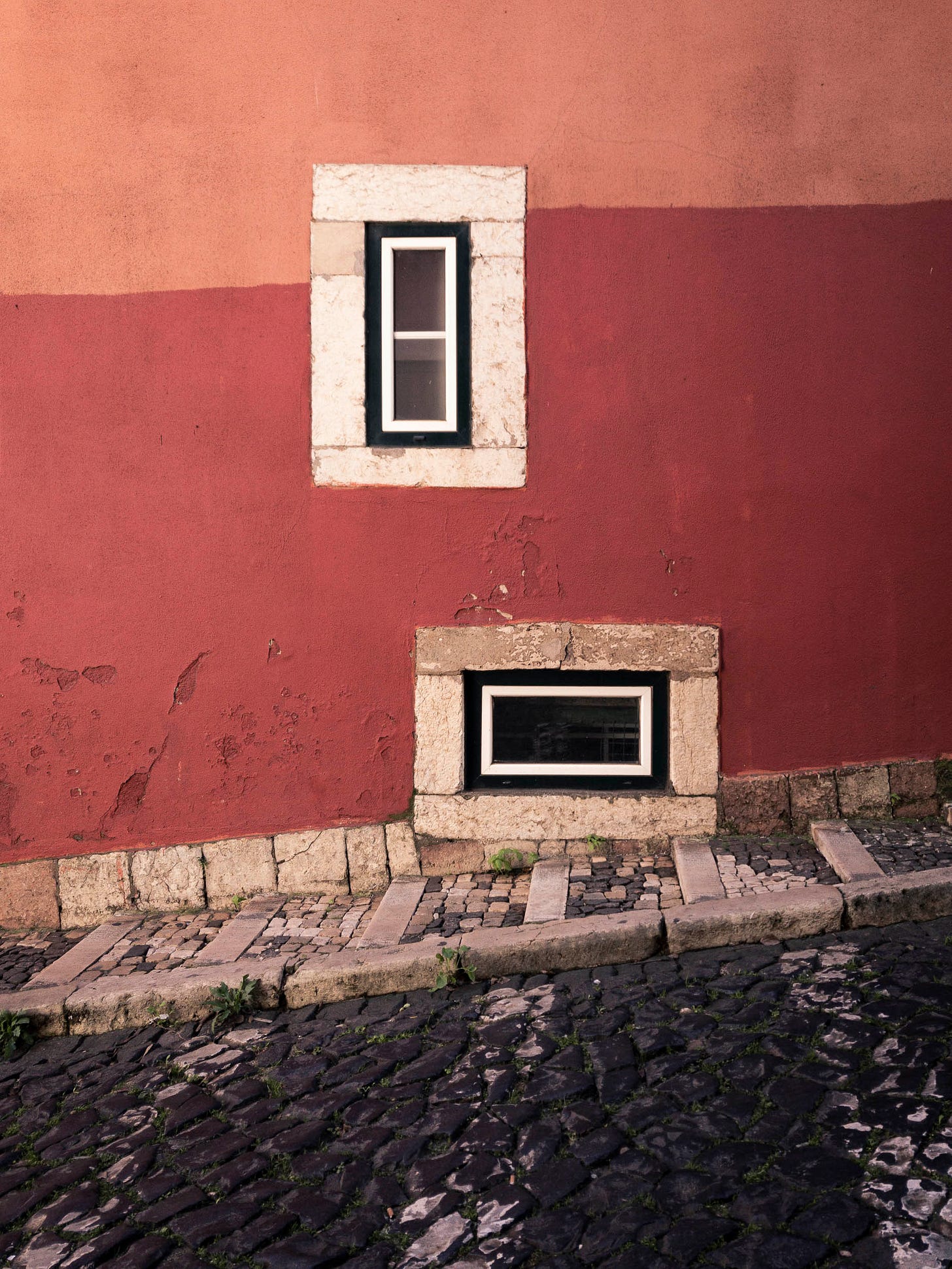The surface that takes you beyond the surface
[TIL #8] I was surprised by my decision to make this image, an irresistible intuition that took some time to understand. How far can a photograph explain itself and when does it need words?
Tales of Ink and Light are short stories and poems told with words (the ink) and photographs (the light). I send the Tales every two weeks. Every other week, I send Touches of Ink and Light: a photograph and the story behind it, as well as brief thoughts on photography and my creative process. And today’s image is
Touching the Surface of the City
I never thought I’d make an image like this one. This is not something I had in mind when I set out on a walk that day, this is not something that i knew to be part of my interests, this is not something that i was looking for. And yet, when i saw it, it was irresistible. It sort of jumped to my eyes and i felt that i had to make the image, however simple and rudimentary the things in the viewer appeared to be. Later, i reflected on the reasons why i had to react to the apparently unremarkable scene that i passed by.
Because, frankly, there is not much of a subject. Yes, inevitably, this is a picture of something: we see a window, a wall, the texture of stones, the colours and the shadows. We can see this is a street and there’s a subtle graffiti on the window. But there is not much going on and you could not describe this image as a decisive moment. By contrast with another image i made in London, there is no human presence. And in yet another one, from Florence (Italy), the text (translated as ‘sacred space’) adds a key dimension to the image. Here, though, no human, no text, no story. And the image is not about texture — as it could be in case of a close-up on the stones or the wall. This is not a picturesque image, although it comes from a city where you can easily indulge into making picturesque photos of the traditional azulejos (ceramic tiles) that cover the façades.
Graphic compositions can cause a certain sort of contemplative pleasure, and so do colours. You could take a restoring bath of green, you could feel a certain satisfaction at the simplicity of the shadow oblique lines that are may be taking the window somewhere by offering a dynamic counterpoint to the stability and immobility of the window. Then, there is the other shade of green, and part of another window, which collude to hint at a pattern constituted by the repetition of the window motive and thereby undermine the excessive balance that the picture would have without them. As i’m looking at this image and wondering why it felt so spontaneously important, i can recognise how the graphic elements play together and the satisfaction they can provide.
And yet, i do not think the image is only about the graphic arrangement of elements. Personally, i can enjoy abstract compositions - some of them, sometimes - and recognise that they have an impact on me. But abstraction is not my form of expression (even in ICM images, i need an identifiable subject).
To me, this image represents the urban surface of the city i live in. You don’t see beyond the surface, but touching it (or seeing it in the case of photography) takes you further into — the encounter, the exploration, the understanding. Like touching the skin of a human being, in a sense: intentional or accidental, it is a contact of a certain intensity. Shaking someone’s hand, you form a certain idea of their personality or of their state of mind. The surface takes you beyond the surface. This is, i think, what i’m trying to investigate with this image, what i’m looking for — what i recognised in an intuition that drove me to making it. But this also may be a point where photography is not a language precise enough to carry all the meaning that i read in the image. This is a moment where words have their role to play in the development of the project.
An open book
As many photographers, i’m a lover of photo books. At home, i use a couple of small easels to keep books open at a certain page for a few days, sometimes a few weeks — with no relation to recent publications or the current events in the photography world.
As I’m writing this, Bernard Plossu’s Western Colors is open on the kitchen counter. The book presents images (printed using the Fresson carbon printing process) of the US southwest made during the 70s and 80s: landscapes, motels, scenes of a mythical dimension. They’re deep images, they take you far beyond their surface.
Thank you for reading. If you celebrate Christmas, may it be a joyful and peaceful moment.
P.S.: If the Tales of Ink and Light work on you — that is, if they make you smile, dream or think — would you do me a huge favour and share them with the people around you who you think would love them too?














The image of the red wall with the window at road level looks great